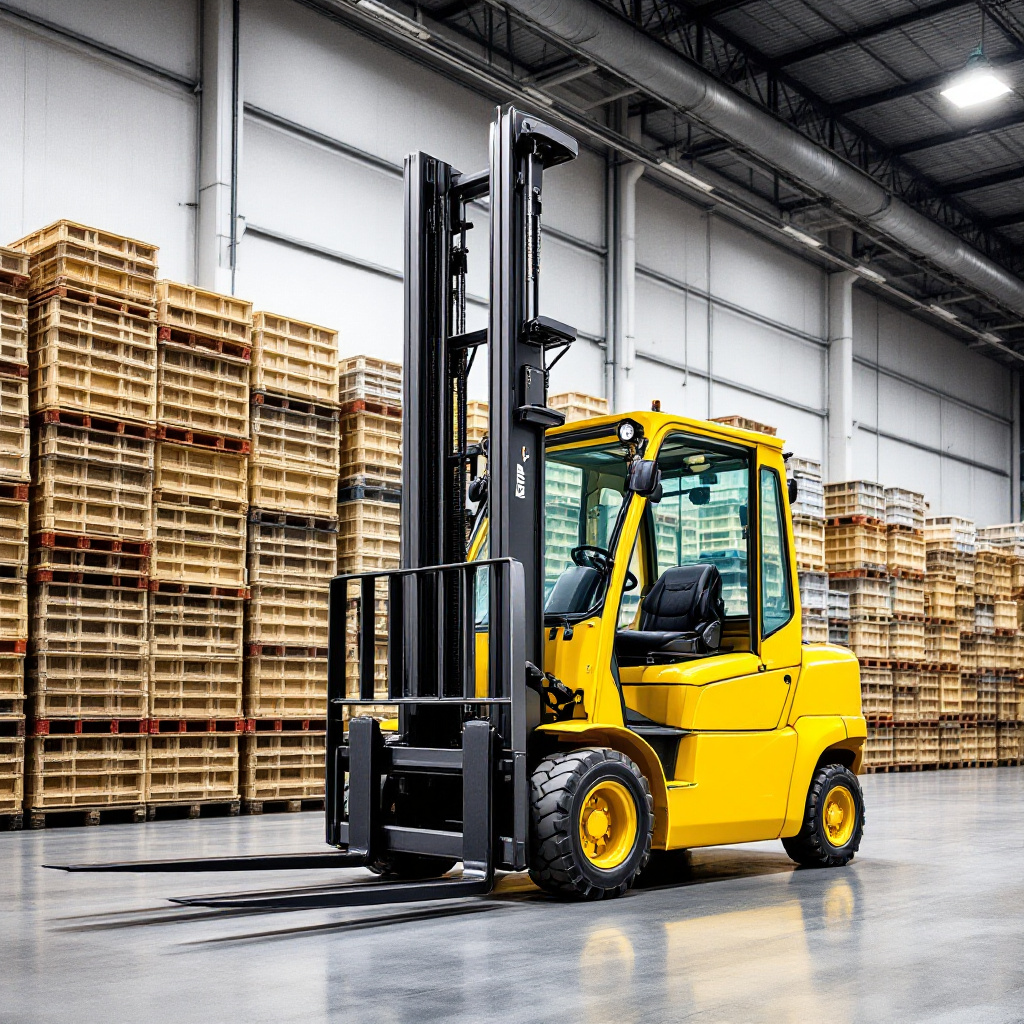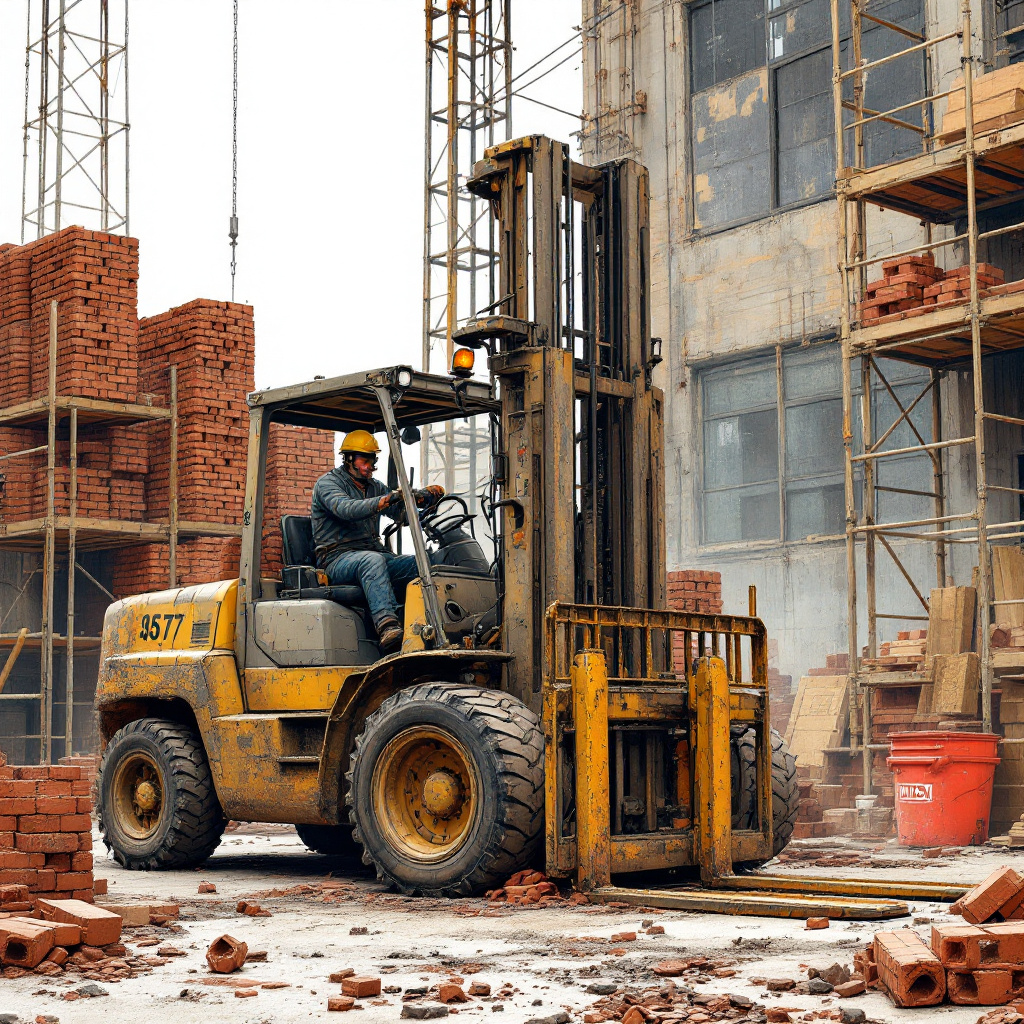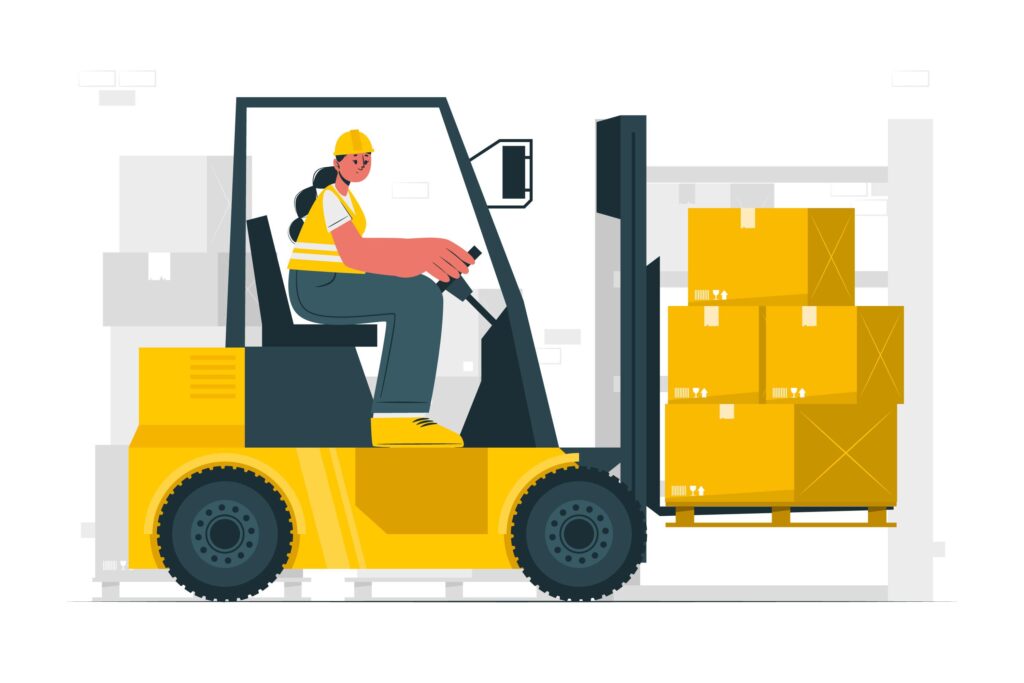Forklift Hour Meter Guide: Knowing Perfect Use & Warning Indicators
Are you curious about how to interpret the hour meter numbers on your electric forklift to extend its life?
Your forklift’s hour meter is its vital sign monitor, which tells you just how hard your machine is working.
For operators and fleet managers, knowing these measurements is not just about monitoring use; it’s also about avoiding expensive failures and preserving best performance. For optimal efficiency, the typical electric forklift should run between 2,000 to 2,500 hours yearly.
Maintaining equipment health and preventing unplanned downtime depend on hour meter monitoring mastery whether you run one forklift or a whole fleet. The fundamentals of controlling the hour meter for electric forklifts let us explore.
Key Factors to Consider:
- Usually, electric forklifts run best between 2,000 and 2,500 hours year, which serves as a guide for proper use.
- Key markers of a forklift’s health are hour meter readings, which assist to forecast maintenance requirements and any problems before they become into concerns.
- The typical lifetime of an electric forklift varies dramatically dependent on use patterns, operating environment, and maintenance procedures, with appropriate care increasing its usable life considerably.
- Regular hour meter reading monitoring helps to determine maintenance intervals and may assist to avoid unplanned downtime, particularly in high usage situations.
- Modern lift trucks with sophisticated hour meters provide more thorough analysis of consumption trends, hence assisting in the optimization of operational efficiency and battery life control.
Categories of Forklift Hour Meters
Digital Hour Meters
Modern forklifts often have digital hour meters, which reflect the most recent development in measuring equipment use time. For fleet management, these electronic gadgets provide exact measurements and other features that are very useful. Usually showing the running hours with decimal point precision, digital forklift hour meter displays make it possible to monitor precise use times.

Often included with these smart hour meters are advanced capabilities including several display modes and maintenance scheduling notifications. Some even link to fleet management systems, allowing them to save historical data and provide thorough analysis of equipment use trends.
Analog Hour Meters
Many forklifts still provide consistent performance with the conventional analog hour meter. Like a car’s odometer, these mechanical devices tally operational hours using a simple counter system. Although simple in form, analog hour meters are renowned for their longevity and simple functioning.
Analog varieties of hour meters have one major benefit: they can run without electricity and resist electrical interference and withstand electrical interference. Usually with rolling numbers tracking total running hours, the analog format primary forklift hour meter shows a straightforward, unambiguous display.
Though each has its own benefits, both kinds fulfill the fundamental purpose of tracking equipment use. Although digital meters give greater functionality and accuracy, analog meters provide simplicity and dependability. Particular operational requirements and financial constraints usually guide the decision.
💡 Key Takeaway: The decision usually relies on particular operational requirements and financial factors. Forklift hour meters are available in digital and analog forms; digital offers advanced features and accuracy while analog offers dependability and simplicity—both efficiently monitoring equipment use time.
Reading Hour Meters
Usual Use Patterns
Knowing normal hour meter readings helps you set standards for the functioning of an electric forklift. Depending on the sector and application, the average duration a forklift runs varies greatly. A standard use pattern usually indicates 2,000-3,000 hours yearly in single-shift activities, which helps define the utilization limit for best performance.
The time restriction logically rises for multi-shift activities; figures between 4,000 and 6,000 hours per year are typical. These trends let fleet managers monitor operating efficiency and properly schedule repairs. When tracking your forklift’s hour meter, it’s crucial to think about your particular operating setting instead than using general criteria.
What are the Warning Signs to Look Out For?
While certain trends may cause worry, high hour numbers don’t necessarily suggest issues. Look out for unexpected hourly usage spikes that contradict operational modifications. This can indicate ineffective routing arrangements or illegal usage.
Be alert when your forklift nears the usual use limit for its category. Between 10,000 and 12,000 total hours, most electric forklifts exhibit wear. Increased maintenance requirements before attaining these milestones might suggest underlying problems.
Important warning signs are:
Early detection of these warning signals by means of regular monitoring enables proactive maintenance and avoidance of expensive failures. Look for abnormalities fast by comparing measurements throughout your fleet to create consistent baseline patterns.
Monitor hour meter readings routinely against set benchmarks, usually 2,000-3,000 hours yearly for single shifts, and look for abnormal patterns that could suggest maintenance requirements or operational inefficiencies.
💡 Key Takeaway: Watch for unexpected patterns that can suggest repair requirements or operational inefficiencies by periodically monitoring hour meter readings against set standards, usually 2,000-3,000 hours year for single shifts.
Expected Life Based on Hour Meter
Effective fleet management depends on knowing how long your electric forklift will serve you. While this might vary greatly depending on use patterns and maintenance methods, the average lifetime of a forklift usually falls between 10,000 to 20,000 hours.
Single Shift Operation
Operating your forklift in a single shift pattern will result in a longer usable life than multi-shift operations. Forklifts usually gather around 2,000 hours yearly in single-shift situations, which suggests they may last for 7-10 years under ideal circumstances.
A forklift in single-shift operations benefits in life from:
Less component wear and tear
Single-shift operations for electric forklifts let the battery go through appropriate charging cycles, which is very necessary to maximize both battery life and general forklift lifetime. Often, a well-maintained electric forklift in single-shift use will surpass the typical life lifetime predictions.
Maximize the usable life of your forklift during single-shift operations by:
- Schedule routine maintenance inspections
- Follow appropriate battery charging procedures.
- Maintain thorough operational records
- Teach operators in quick handling
Keep in mind that while a forklift’s average lifetime may be stated in hours, the real calendar life might vary greatly when running in single shifts, if you keep appropriate care and attention to maintenance plans.
💡 Key Takeaway: In single-shift operations, electric forklifts usually reach 10,000-20,000 hours of usable life, maybe lasting 7-10 years with good maintenance and operating procedures.
Hour Reading Based Maintenance
Scheduled Preventive Maintenance
Your electric forklift runs well with regular maintenance; the hour meter is your tool for planning these necessary activities. Tracking when certain maintenance activities are required is made easier by a well-kept service record, so guaranteeing the best operation of your equipment.
💡 Key Takeaway: Though some manufacturers may advise maintenance intervals in somewhat various ways, most follow a regular timetable depending on operation hours. Basic maintenance checks, for instance, might be needed every 250 hours; more thorough services are planned at 500, 1000, and 2000-hour milestones.
Based on hour meter measurements, a typical maintenance plan appears as follows:
Every 250 hours:
- Review and change fluid levels
- Check brake system
- Check battery status.
- Change hydraulic oil
- Change filters
- Examine parts of the mast
Every thousand hours:
- Finish transmission service
- Examine cooling system
- Assess steering parts
Regular maintenance helps to prolong the life of your forklift and helps to avoid expensive failures. Every maintenance period offers a unique approach to evaluate and preserve many parts of your electric forklift, hence guaranteeing the proper interaction of all systems.

Keep a note of every maintenance task in your service record. This records the history of the equipment and enables one to find any trends in wear or performance problems before they become more significant.
💡 Key Takeaway: Following a systematic preventive maintenance program based on hour meter data helps prolong forklift life, minimize failures, and maintain maximum performance via regular repair intervals.
Financial Factors
Managing your forklift fleet requires knowledge of the economic factors if you are to make wise choices regarding maintenance, repairs, and replacements. A forklift’s economic life goes beyond just its operating capacity; it’s about striking the right balance between cost-effectiveness and utility.
Timing for Replacement
Choosing the appropriate moment to replace your electric forklift calls for thoughtful analysis of many variables. Resale value is greatly influenced by the vehicle brand reputation, which thus influences your whole return on investment. Although a used forklift may first seem to be a reasonably priced option, it is crucial to consider the long-term financial consequences.
To save initial expenses, many fleet managers choose a second-hand forklift. But, one should weigh this choice against dependability issues and possible maintenance costs. Repair expenses usually rise as your forklift becomes older and productivity could decline, affecting your bottom line.
When assessing replacement, think about following financial indicators:
- Increasing maintenance expenses beyond 30% of the value of the forklift
- Declining production is impacting operating efficiency.
💡 Key Takeaway: Knowing your forklift’s economic life and making prompt replacement choices depending on maintenance costs, productivity, and operational efficiency will greatly influence the bottom line of your company. Key Takeaway: Knowing the economic life of your forklift and making prompt replacement choices depending on maintenance expenses, production, and operational efficiency can greatly affect the bottom line of your company.
Final Thoughts
You must learn electric forklift hour meter readings to maximize performance and equipment life. Knowing the warning signs, following usage patterns, and undertaking preventive maintenance may drastically decrease unexpected downtime and maximize your investment.
While the ideal annual usage is 2,000 to 2,500 hours, your forklift’s lifespan depends on operating conditions, maintenance procedures, and the workplace. Regular hour meter readings and maintenance schedules let you choose equipment replacement and enhancements.
Act today with a thorough hour meter monitoring plan. Record readings, implement maintenance programs, and train staff. Be proactive in fleet management to ensure longer equipment life, increased operational efficiency, and considerable long-term cost savings. Your forklift hour meter is your key to smart fleet management, not just a number.
Frequently asked questions
How do I reset the hour meter on an electric forklift?
Hour meters on electric forklifts should not be reset. Designed to provide a permanent record of working hours for maintenance scheduling and resale value evaluation, Often unlawful, hour meter tampering cancels warranty coverage.
In a forklift, what distinguishes engine hours from key-on hours?
While key-on hours track overall time the key is in the “on” position, engine hours gauge actual operational time the forklift is running and operating. Engine hours are more significant for maintenance planning as they provide a more accurate indication of actual use.
Do severe temperatures influence hour meter readings on forklifts?
Certainly, hour meter accuracy may be affected by severe temperatures. While too hot might lead to wear, very cold circumstances could slow down the electrical parts of the meter. For reliable measurements, operating forklifts within their designated temperature ranges is advised.
How often should I monitor hour meter readings on my forklift?
For high-usage forklifts, monitor hour meter readings at least weekly; for light-use equipment, monthly. Regular monitoring enables you to track consumption trends, plan maintenance properly, and spot any operational inefficiencies in your fleet control.
How do hour meter values relate to battery life?
Hour meter values affect directly battery life expectancy. Usually, a lithium-ion battery lasts around 10,000-12,000 hours; lead-acid batteries usually last 5,000-6,000 hours. Higher hour numbers suggest more charging cycles and possible battery deterioration.
Do digital hour meters outperform mechanical ones in dependability?
Usually, digital hour meters are more accurate and dependable than mechanical ones. They generally include extra capabilities such use history monitoring and maintenance notifications, provide more exact readings, and are less prone to vibration damage.



